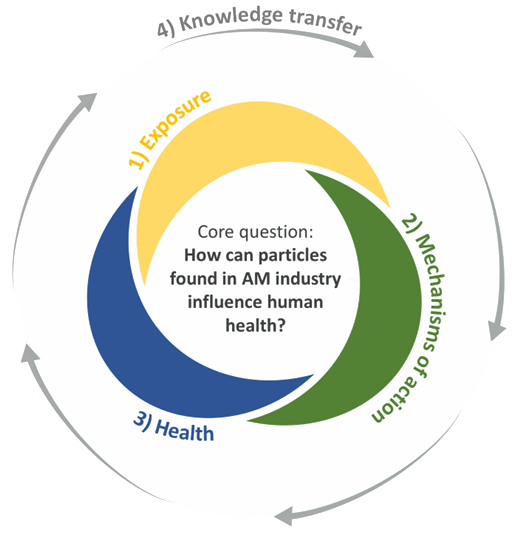About NanoSafety
NanoSafety is a research effort at the Örebro University (Sweden) aiming to address health and safety challenges of (nano)particles found in the additive manufacturing (AM) or industrial 3D printing.
NanoSafety story began within the HÖG19 NanoSafety1 project funded by the KK-Stiftelsen (KKS), and continued through a number of grants including Afa-funded PiA project, Prospekt22 NANOSIGN project, and finally Synergi22 NanoSafety2 project (Dec 1, 2023 – Nov 30, 2027). NanoSafety2 is to be viewed as a progression from the HÖG19 project that provided the opportunity to bring the AM concerns and questions into focus, to develop methods, recruit manpower, and to gather Swedish forefront AM companies to form an interdisciplinary platform of knowledge and experience with the goal of performing health and safety assessment of (nano)particles found in the AM industry. NanoSafety2 is jointly coordinated by the Inflammatory Response and Infection Susceptibility Center (iRiSC) and Man-Technology-Environment research center (MTM) at the Örebro University.

